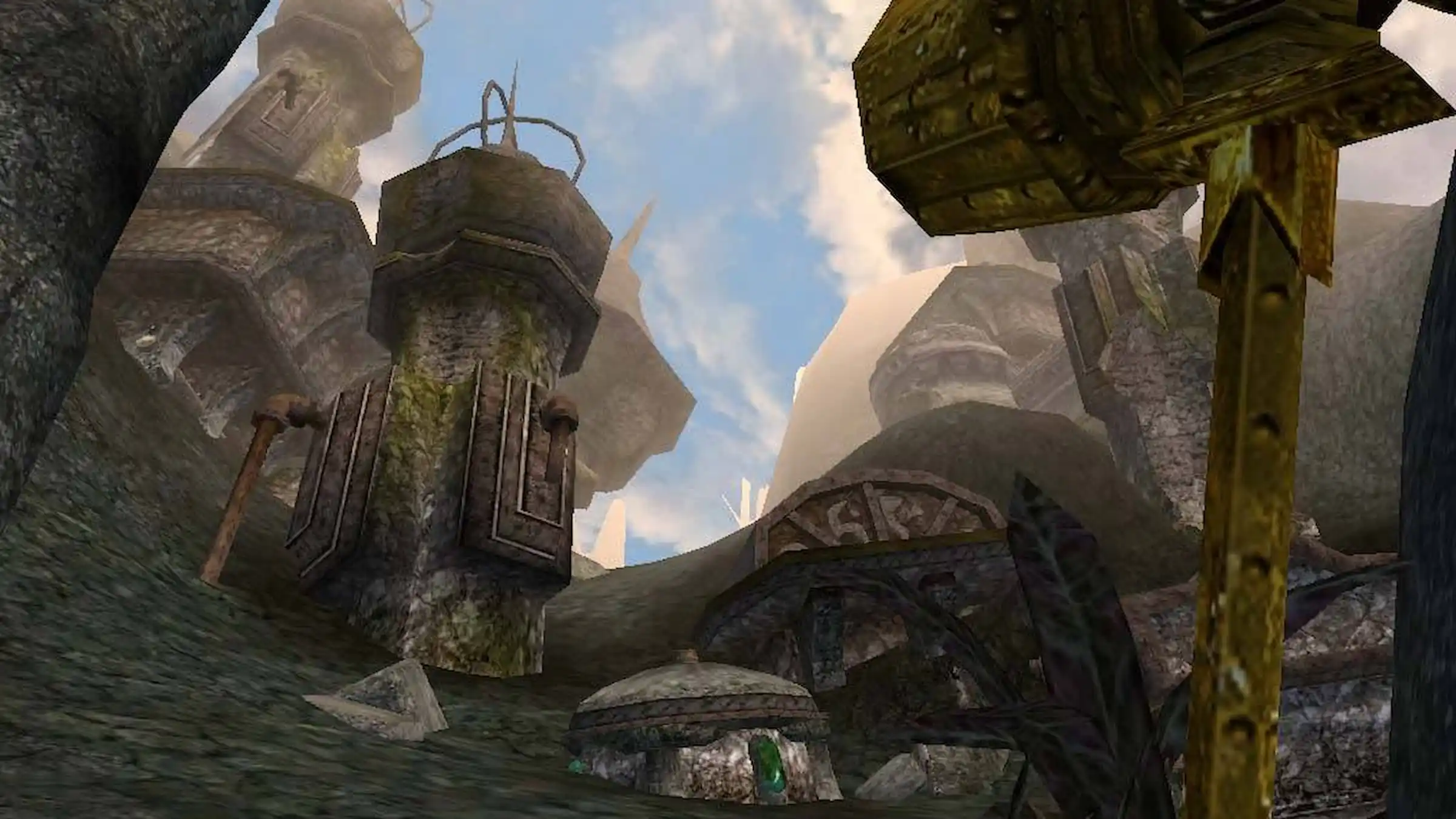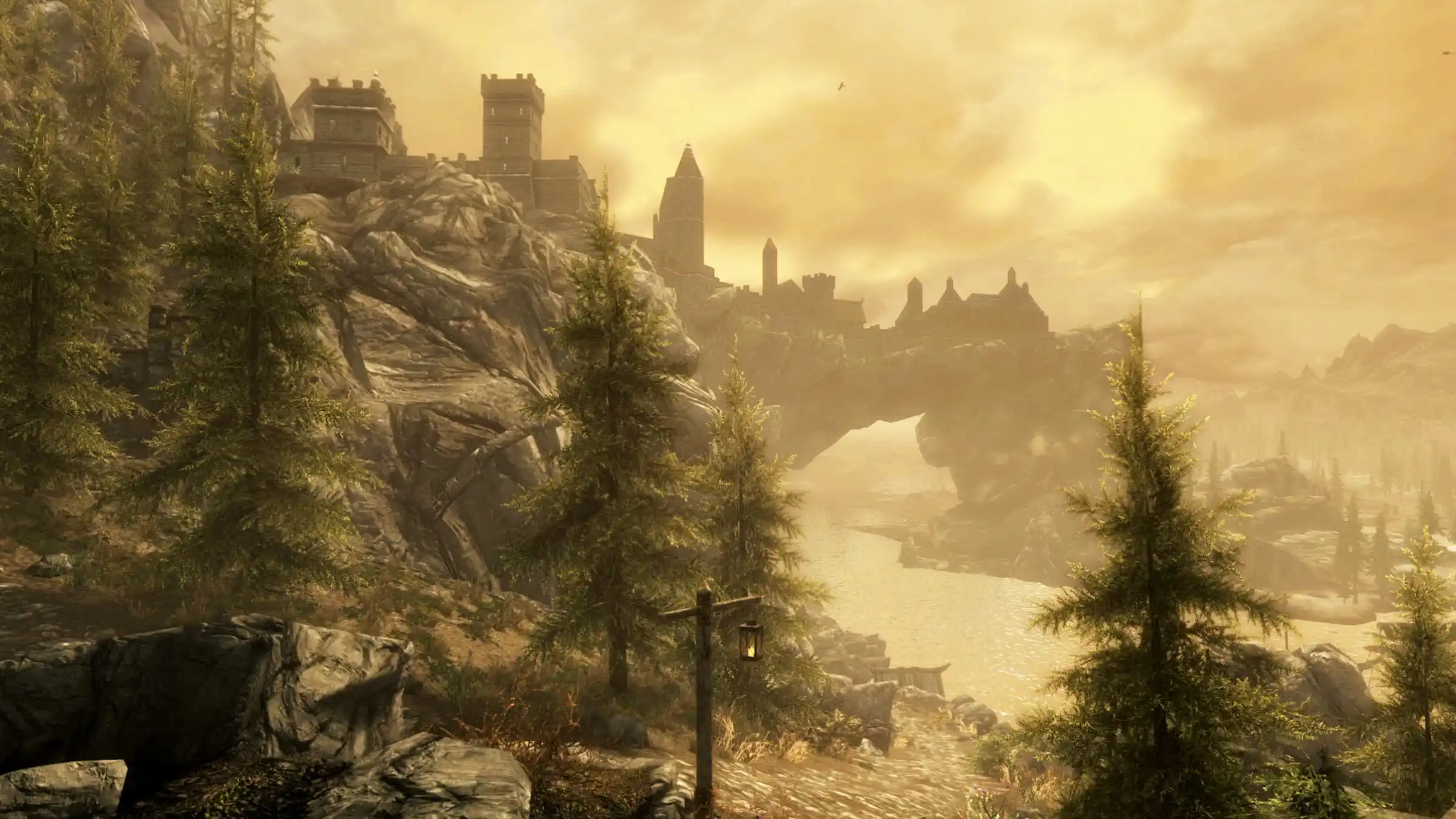
It’s incredibly rewarding to explore a digital world on your own terms. There’s a special feeling that comes from finding something unexpected – a hidden cave, a secret shrine – simply by wandering off the main path. Open-world games have always been about freedom, being curious, and enjoying the mystery of the unknown. However, modern games often guide players too much. Instead of feeling like a huge world to discover, many now feel like interactive tutorials, constantly pointing you towards your next objective.
In the early 2000s, video games were much more immersive. They required players to really focus, be patient, and truly explore the game world. Getting ahead usually meant studying maps, remembering important locations, and figuring things out on your own, without a lot of help. The Legend of Zelda series was a great example of this, but many other games followed the same approach. Nowadays, though, games often tell you exactly where to go and what to do, removing a lot of that challenge and discovery.
From Open-World Landmarks to Breadcrumbs

I’ll never forget playing Morrowind for the first time on the original Xbox. It wasn’t enough to simply explore the game’s world; you really had to understand it. The land of Vvardenfell was huge and full of unexpected things, but there were no on-screen directions or quest markers. You needed to study the landscape, learn the towns, pay attention to what people told you, and use the map to find your way. Getting lost felt serious, and finding a quicker route was incredibly rewarding.
Many modern open-world games, like those made by Ubisoft, overwhelm players with on-screen directions – map icons, quest markers, and collectibles constantly tell you where to go. While this might seem helpful, it takes away the fun of discovering things naturally. You don’t need to observe the landscape, spot distant sights, or remember your route. The game essentially guides you step-by-step. The satisfaction of finding your own way has been largely replaced by easy-to-follow markers, compasses, and highlighted paths.
Games like Hell Is Us are unusual these days because they emphasize true exploration. Instead of relying on maps or clear directions, players have to pay attention to their surroundings, use landmarks, and trust their instincts to find their way. This makes simply learning the game world a rewarding experience, just as important as fighting or completing quests. While some players used to find this challenging, it’s now seen as a way to create a deeply immersive experience.
A Lost Skill, Rediscovered By Hell is Us

Honestly, one of the best feelings in gaming is figuring things out for myself, without the game holding my hand. I still remember exploring the beginning of Skyrim without fast travel – I actually used landmarks like mountains and rivers to get around! Finding Bleak Falls Barrow for the first time wasn’t because a marker told me where to go, but because I followed the story. It felt amazing. Nowadays, though, so many open-world games just point you to everything with arrows and waypoints. It’s like we’ve lost the ability to actually learn the world around us and just rely on the game to tell us where to go.
It’s easy to see why game developers make certain choices. They want games to be easy to pick up, avoid frustrating players, and always guide them on what to do. Things like on-screen hints, quest markers, and detailed maps are really useful, especially in huge games with lots of side missions and collectibles. However, this can also remove the challenge and sense of discovery that used to be central to the genre. Finding things yourself becomes less rewarding, and exploration feels less meaningful.
Bringing back a focus on navigation isn’t just about looking back at older games. When games require players to really learn the environment – remembering landmarks and terrain – it makes the experience much more engaging and satisfying. Each trip feels like solving a puzzle, and every route becomes a genuine discovery. Games like Hell is Us, which emphasize map-reading and careful observation, make open-world gaming more impactful than simply following markers on a screen.
The Future of Exploration in Open Worlds

What does this all mean for open-world games going forward? Developers can learn from both older and newer approaches. It’s important to make games easy to pick up and offer some direction, but also to allow players to explore and figure things out on their own. Finding the right balance between guidance and freedom can create game worlds that feel huge, immersive, and exciting to discover, without being overwhelming. The Legend of Zelda: Breath of the Wild is a perfect example of how to do this well.
I’d love to see more game developers create experiences like Breath of the Wild and Hell Is Us – games that trust players to figure things out and explore on their own. Open-world games don’t need constant on-screen directions to be successful. Instead, they can use the environment itself – interesting landmarks and well-designed levels – to tell stories and encourage players to genuinely connect with the game world in a meaningful way.
Even popular game series like Assassin’s Creed could be improved by simplifying things. Instead of filling maps with tons of markers and tasks, focusing on memorable locations and clear design could make exploring feel rewarding again, instead of like a task just following on-screen instructions. What makes open-world games special is the feeling of being a real explorer, not just someone ticking items off a list. While many modern open-world games prioritize convenience over skillful navigation, the potential for more engaging exploration still exists.
What do you think? Leave a comment below and join the conversation now in the ComicBook Forum!
Read More
- FC 26 reveals free preview mode and 10 classic squads
- When Perturbation Fails: Taming Light in Complex Cavities
- Hazbin Hotel season 3 release date speculation and latest news
- Fluid Dynamics and the Promise of Quantum Computation
- Dancing With The Stars Fans Want Terri Irwin To Compete, And Robert Irwin Shared His Honest Take
- Jujutsu Kaisen Execution Delivers High-Stakes Action and the Most Shocking Twist of the Series (Review)
- Where Winds Meet: Best Weapon Combinations
- Red Dead Redemption Remaster Error Prevents Xbox Players from Free Upgrade
- Is There a Smiling Friends Season 3 Episode 9 Release Date or Part 2?
- Walking Towards State Estimation: A New Boundary Condition Approach
2025-11-15 19:14